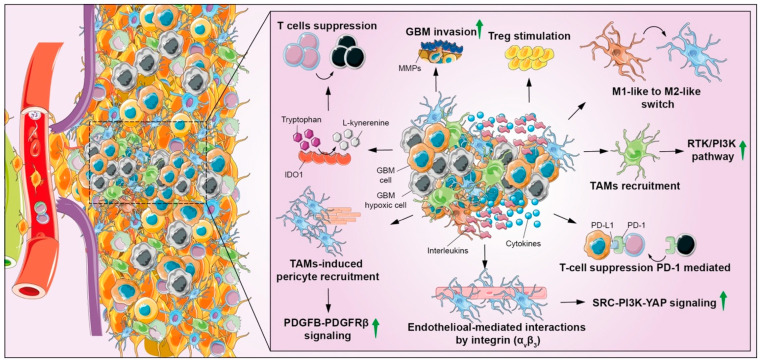Figure 7.
Representation of metabolic reprogramming processes connected GBM invasiveness. The support of GBM invasiveness in hypoxic conditions is not only directly linked to lactate production, but also by indirect effects such as the production of additional signals of molecules such as phosphoglucose isomerase/autocrine-motility factor (PGI/AMF), lipid metabolism and amino-acid reprogramming offer an important contribution to the proinvasion phenotype. Microglia adopts aerobic glycolysis by increasing lactate production and promoting M2 polarization with the concomitant production of cytokines and other factors that can directly suppress effector cells or indirectly via other types of immune cells such as intratumoral DCs and Treg cells, resulting in immunosuppression.

